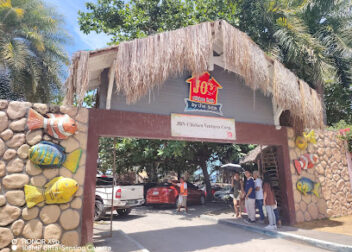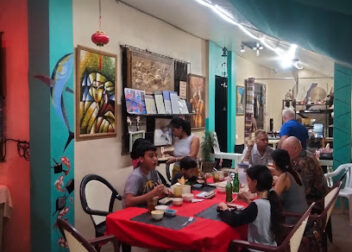How safe is Dumaguete for tourists?
Traveling to a new destination can be both exhilarating and daunting, especially when it comes to ensuring your safety. If you’re considering a trip to Dumaguete, affectionately known as the ‘City of Gentle People’, you might be wondering just how safe this picturesque coastal city is for tourists. With its rich culture and stunning landscapes, Dumaguete has much to offer, but it’s natural to have concerns about your well-being while exploring. In this post, we’ll dive into the safety landscape of Dumaguete, looking at crime rates, health considerations, and local customs, so you can travel with confidence and peace of mind. Let’s explore together!
Crime Rates and Safety Statistics
When considering a travel destination, understanding the local crime rates and safety statistics is crucial. Dumaguete, often referred to as the “City of Gentle People,” is not only known for its picturesque landscapes and friendly locals, but also for its relatively safe environment. However, like any place, it’s essential to stay informed about the safety landscape.
Overview of Crime Rates in Dumaguete
Dumaguete has a reputation for being a safe city, particularly when compared to larger urban centers in the Philippines. According to the Philippine National Police (PNP) crime statistics, Dumaguete experiences lower crime rates compared to other cities. Here’s a breakdown of some common crimes reported in recent years:
- Theft: This is one of the more prevalent crimes, often involving petty theft from tourists. However, the majority of these incidents are opportunistic rather than violent.
- Robbery: Incidents of robbery are relatively low, but they can occur, especially in less populated areas after dark. It’s advisable for tourists to avoid secluded places at night.
- Violent Incidents: Violent crimes, such as assaults, are rare in Dumaguete, particularly in tourist-heavy areas. Most interactions with locals are positive and friendly.
Comparative Crime Rates
To give you a clearer perspective, let’s compare Dumaguete’s crime rates to other popular tourist destinations in the Philippines, such as Cebu and Manila:
| Crime Type | Dumaguete | Cebu | Manila |
|---|---|---|---|
| Theft | 150 | 300 | 800 |
| Robbery | 30 | 75 | 300 |
| Violent Incidents | 10 | 50 | 150 |
Note: The numbers represent reported incidents per 1,000 residents.
Local Law Enforcement and Tourist Safety
Dumaguete is served by an efficient local police force dedicated to maintaining safety for both residents and visitors. The Dumaguete City Police Office has initiatives in place that focus on community engagement and crime prevention. Here are some key points about their effectiveness:
- Community Policing: Officers are actively involved in community activities, fostering relationships with locals and tourists alike. This approach builds trust and encourages residents to report suspicious activities.
- Tourist Assistance: Tourist police are stationed at key areas like the Dumaguete Airport and popular tourist spots, ensuring that travelers feel safe and have easy access to help if needed.
- Emergency Response: The local police response time is generally quick, with officers trained to handle emergencies effectively. In case of any issues, tourists can dial 911 for immediate assistance.
Safety Tips for Tourists
While Dumaguete is relatively safe, it’s always wise to remain vigilant. Here are some practical tips for tourists:
- Stay in Well-Lit Areas: When exploring at night, stick to populated and well-lit streets.
- Use Reputable Transportation: Opt for recognized taxi services like Grab, which operates in Dumaguete, ensuring safe and reliable transportation.
- Secure Valuables: Use anti-theft backpacks like the Pacsafe Venturesafe or similar products that offer additional peace of mind.
- Be Aware of Your Surroundings: Keep your phone and belongings secure, especially in crowded areas.
Health and Medical Facilities
When planning a trip to Dumaguete, it’s essential to be informed about the health and medical facilities available in the area. This charming city, known for its welcoming locals and beautiful landscapes, is also equipped with a range of healthcare options that cater to both residents and visitors alike. In this section, we’ll delve into the quality of hospitals and clinics, accessibility of medical services for tourists, common health concerns, and important health precautions to take during your visit.
Quality of Hospitals and Clinics
Dumaguete boasts several hospitals and clinics that provide a range of health services. Here are some of the key facilities you might want to know about:
- Silliman University Medical Center
A reputable hospital that offers comprehensive services, including emergency care, maternity services, and specialist consultations. It is known for its well-trained staff and modern medical equipment. - Holy Child Hospital
Another well-established facility, Holy Child provides various medical services, including surgery, pediatrics, and outpatient care. The hospital is recognized for its compassionate care and patient-centered approach. - Dumaguete Doctors’ Hospital
This facility is equipped with advanced medical technology and offers a wide array of services, from diagnostics to inpatient care. They also have specialists in various fields, making it a reliable choice for more specialized health needs. - Clinics
Aside from hospitals, Dumaguete has many clinics like Healthway Medical and Clinica de Poblacion, which provide outpatient services, routine check-ups, and minor treatments. These clinics are often more accessible for tourists looking for quick consultations.
Accessibility of Medical Services for Tourists
Tourists in Dumaguete can expect relatively easy access to medical services. Most hospitals and clinics operate 24/7, making it convenient for any emergencies that might arise during your stay. Here are some points to consider:
- Language: Many medical staff in Dumaguete speak English, which eases communication for tourists seeking medical attention.
- Insurance: It’s advisable to check if your travel insurance covers medical services in the Philippines. Some insurance plans may even offer direct billing arrangements with local hospitals.
- Location: The central location of many hospitals and clinics makes them easily reachable, whether you’re staying in the city center or nearby resorts.
Common Health Concerns
When visiting Dumaguete, certain health concerns may arise, particularly related to the tropical climate. Here are a few common issues to be aware of:
- Mosquito-Borne Diseases:
Diseases like dengue fever and chikungunya are prevalent due to the region’s climate. It’s crucial to take preventive measures:- Use mosquito repellent containing DEET, such as Off! Deep Woods or Repel 100.
- Wearing long-sleeved clothing and using bed nets in accommodations can also help reduce exposure.
- Water and Food Safety:
While Dumaguete is generally safe, it’s wise to take precautions regarding food and water:- Drink bottled water, such as Nestlé Pure Life or Aquafina, to avoid waterborne illnesses.
- Eating at reputable restaurants and avoiding street food can minimize the risk of gastrointestinal issues.
Health Precautions for Tourists
Before and during your visit to Dumaguete, consider these health precautions to ensure a smooth experience:
- Vaccinations:
Check with your healthcare provider to ensure you are up to date on routine vaccinations. Depending on your travel history, vaccinations for hepatitis A, typhoid, and rabies may also be recommended. - First Aid Kit:
Pack a small first aid kit with essentials like adhesive bandages, antiseptic wipes, pain relievers like Ibuprofen, and any personal medications. Brands like Benadryl can be handy for allergic reactions. - Travel Insurance:
Make sure to secure travel insurance that includes health coverage. Policies from companies like World Nomads or Allianz Travel can provide good coverage for medical emergencies. - Local Emergency Numbers:
Familiarize yourself with local emergency contacts. In Dumaguete, you can dial 911 for emergencies, and hospitals like Silliman University Medical Center have emergency departments available for urgent care.
By being proactive and informed about the health and medical facilities in Dumaguete, you can focus more on enjoying your trip while ensuring your well-being. Whether you’re seeking routine care, facing an emergency, or simply looking for health advice, the city has resources to support you.
Understanding Local Customs in Dumaguete
When visiting Dumaguete, it’s essential to be aware of the local customs and cultural norms. Embracing these practices not only enhances your experience but also helps you build rapport with the locals. Here’s a closer look at some important cultural considerations to keep in mind.
Dress Codes: What to Wear
In Dumaguete, the climate is warm and tropical, which influences the local dress code. While casual attire is generally acceptable, there are certain situations where dressing appropriately is paramount.
- Casual Wear: Light, breathable fabrics like cotton or linen are ideal. T-shirts, shorts, and sandals are common for daytime excursions.
- Beach Visits: Swimwear is perfectly acceptable at the beach, but it’s respectful to cover up when leaving the beach area. A sarong or beach cover-up is a good option.
- Religious Sites: When visiting churches or other religious sites, modest clothing is expected. For women, this may mean wearing a dress or skirt that covers the knees. Men should opt for long pants and a collared shirt.
Behavioral Expectations: How to Interact
Filipinos are known for their hospitality and warmth. Here are some behavioral norms to observe when interacting with locals:
- Greetings: A simple “Hello” or “Good morning” goes a long way. A handshake is common, but for a more traditional greeting, you can try the “Mano” gesture, where you take the elder’s hand and bring it to your forehead.
- Politeness: Using polite language, such as “po” and “opo” when speaking to elders, reflects respect. For example, saying “Salamat po” instead of just “Salamat” can make a positive impression.
- Dining Etiquette: If you’re invited to a local home for a meal, it’s customary to bring a small gift, like pastries from Belfry Café or fruits from the market. Remember to wait for the host to invite you to start eating.
Potential Cultural Misunderstandings: What to Avoid
While most interactions will be pleasant, being aware of potential cultural misunderstandings can help you avoid awkward situations:
- Personal Space: Filipinos may stand closer during conversations than you might be used to. This isn’t meant to invade your personal space; it’s just a cultural norm. However, if you feel uncomfortable, it’s okay to take a step back.
- Pointing: Instead of pointing with their fingers, many Filipinos will use their chin to indicate something. If you find someone gesturing with their chin, don’t be surprised!
- Directness: Filipinos often communicate indirectly to maintain harmony. If someone says “maybe” or “I’ll think about it,” it could mean they’re not interested. Pay attention to non-verbal cues as well.
Practical Examples of Cultural Integration
Here are a few practical tips to help you integrate smoothly into the local culture:
- Local Markets: Visit Dumaguete Public Market to experience local life. Engage with vendors; a simple compliment about their goods can spark a friendly conversation.
- Cultural Events: Participate in local festivals like the Sandurot Festival. This is a great way to immerse yourself in the community and witness traditional dances and foods.
- Learn Basic Phrases: Familiarize yourself with Filipino phrases. Knowing how to say “Salamat” (Thank you) or “Paalam” (Goodbye) can be very appreciated by locals.
Summary of Key Points
| Custom | Description |
|---|---|
| Dress Code | Casual attire for daytime; modest clothing for religious sites. |
| Greetings | Handshakes and the “Mano” gesture for showing respect. |
| Dining Etiquette | Bring a small gift if invited to a meal; wait for the host to start eating. |
| Personal Space | Closer proximity is normal; feel free to step back if uncomfortable. |
| Indirect Communication | Pay attention to non-verbal cues; directness may be avoided to maintain harmony. |
By respecting these local customs and cultural norms in Dumaguete, you’ll not only enjoy a more authentic experience but also forge meaningful connections with the community.
Final Thoughts on Dumaguete’s Safety for Visitors
In conclusion, Dumaguete stands out as a relatively safe destination for tourists, particularly when stacked against other locations in the Philippines. While the city is welcoming and friendly, it’s important for travelers to stay alert, honor local customs, and adhere to health guidelines. By keeping these safety tips in mind, visitors can fully immerse themselves in the beauty and charm of Dumaguete, all while enjoying a worry-free experience.



